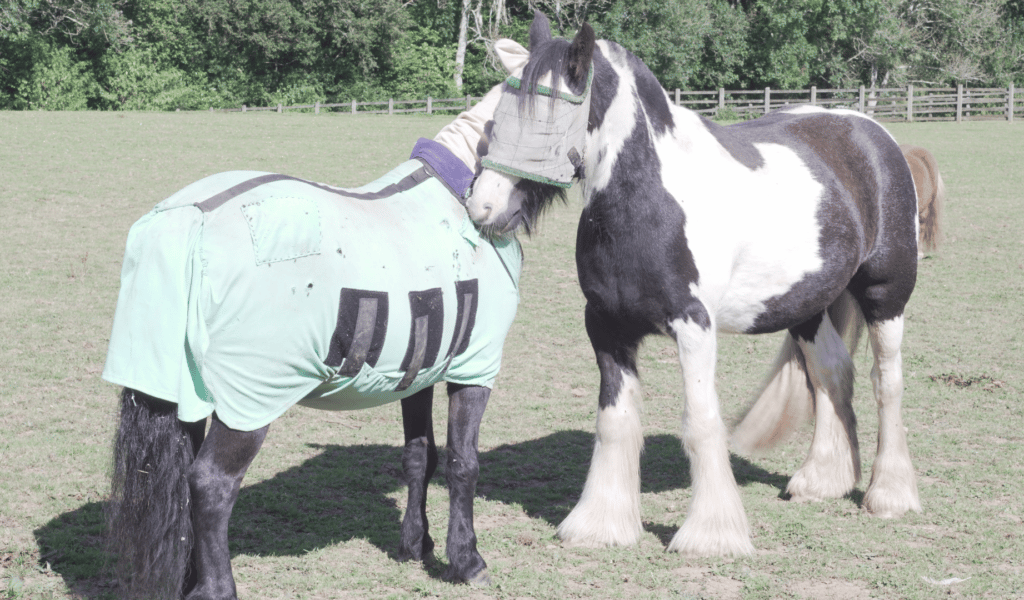What is sweet itch?
Sweet itch is one of the UK’s most common allergic skin diseases in equines. It affects around 5% of the UK horse population. Some research shows it is particularly prevalent in native breeds. Sweet itch is an allergic reaction to bites from certain insects such as mosquitos and midges. UK horses suffer from bites from black flies (stimulium) and midges (culicoides). These are most active from March to November.
What are the symptoms?
Symptoms and severity vary from horse to horse. Some will occasionally scratch, others will persistently rub causing irritation and abrasions all over the body that can lead to secondary skin infections. Itching is mainly seen on the neck, mane, tail, face, ears and belly, but horses that are really suffering will attempt to scratch any part of their body using whatever is available. The skin can appear lumpy, scaly, inflamed and thickened and is often hot to touch. A horse with unmanaged sweet itch usually has patches of hair loss, ruffled and dull coats with dandruff and scurf deep in the coat.

How to best manage a horse with sweet itch
- It is a good idea to have multiple high-quality sweet itch rugs with belly coverings and fly masks. Having several different ones means you can change them regularly and wash them whilst ensuring your horse doesn’t go without.
- When managing sweet itch, it is often necessary to stable your horse at dawn and dusk when the midges are most present. Being stabled can often provide relief and an area for your horse to be without a rug for a short period of time.
- Installing fans in stables and thin mosquito coverings on stable windows will help provide a low-midge environment. Please ensure electricals are only used if tested and safe.
- If your horse is ridden and rug trained, a ride-on fly rug can provide relief when out riding during the day from March to November.
- Cold hosing and bathing with oatmeal and anti-itch shampoos can give itchy and inflamed areas some short-term relief.
- Keep your horse away from standing water, streams, rotting vegetation and muck heaps. This is because these areas have an increased midge presence.
- Try, when possible, to opt for a yard located on land with good drainage. Chalk-based grasslands and coastal locations are known to have fewer midges than heavy clay-based pastures.
Treatments to provide relief
Prevention is better than cure, managing a horse that has been diagnosed with sweet itch can involve some trial and error to establish what works best for your equine.
If your horse has extreme itching and irritation, your vet may prescribe steroids to offer short-term relief. These cannot be used long term and are only suitable for some horses as they increase the risk of laminitis.
Antihistamines can also relieve symptoms when given in large quantities. This can be an expensive option and should only be considered if advised by your vet.
Cavaless is a supplement that contains nicotinamide. Your vet may be able to prescribe this to help reduce the itching.
Creams that contain benzyl benzoate help to reduce irritation and itching and can be purchased in most equine stores. Be careful not to apply these to any areas of broken skin. Always wear gloves when applying and ensure you do a patch test for 24 hours on your horse when trialling new products.
This information is intended as a general guide. Just like us, our horses are all individuals. For specific advice about your horse please seek and follow your vet’s advice.
Downloadable Information
Take a look at our downloadable version of this page, to keep or share.
Downloadable VersionOur Work at The Mare and Foal Sanctuary
Advice and Resources
Lifelong Sanctuary
Rehoming



